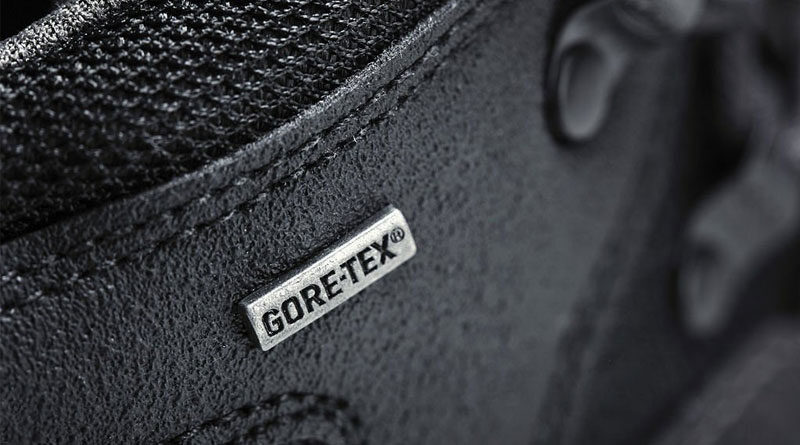Is it Worth Spending Extra Money on Gore-Tex?
Waterproofing and Gore-Tex have nearly become synonyms in outdoor clothing and footwear. You cannot talk about waterproofing without mentioning Gore-Tex in a conversation. This fabric has become the gold standard in outdoor gear and clothing and most of us are already familiar with this fabric. So what exactly is this fabric? And is it worth spending extra money on this fabric? Well, keep reading to learn more.
What is Gore-Tex?
Gore-Tex is a synthetic fabric that is actually a trademarked technology that is permeable to air and water vapor. In other words, it is basically a membrane that allows water vapor to pass through it but not actual liquid water. This means it will keep you dry yet ventilated. The whole purpose behind this technology is to create outdoor gear that enables people to sweat while wearing it. Unlike synthetic materials such as non-breathable nylon, this technology offers better breathability while still being waterproof. In the world of backpacking shoes, the point was not to allow water inside and to also allow your feet to stay dry. Since the fabric is breathable and will allow water vapor from sweat to come out of the shoe.
Problems with Gore-Tex
Well, Gore-Tex sounds like a very good idea. But ideas sometimes just don’t work in real-world situations. No matter what the manufacturers say, your feet will always sweat in waterproof footwear. That’s because Gore-Tex shoes aren’t really waterproof. On dry days, your feet will be sweaty, clammy, damp, hot, and altogether less comfortable in Gore-Tex boots than in non-waterproof boots. The same goes for clothing as well. A Gore-Tex jacket will always be less breathable and ventilated than a non-waterproof jacket.
Gore-Tex in Hiking Boots and Shoes
Having your feet in a sweaty, hot, and stagnant kind of environment is really a bad idea while you’re backpacking. It makes your feet more prone to blisters. It’s a breeding ground for bacteria to infect blisters or other cuts or scrapes on your feet. Also, it’s a great habitat for fungus. Things like trench foot that backpackers definitely don’t want to have while on a trip.
The second thing about Gore-Tex boots is that water will eventually get in, especially during slow soaking rain. This is because there is a big hole at the top where your foot goes. You can overcome this problem to some extent by using waterproof gaiters but it is the extra weight that most backpackers will not be interested in. Another option is to wear rain pants but they become too hot on hot sunny days.
Finally, if you are going through water crossings, fording, or any deep creeks or rivers that are deeper than your ankle level, then having these waterproof boots is a pain. Because you have to stop, take them off, go through barefoot, and put them on back. If you have several water crossings in a row, it really gets time-consuming and isn’t feasible at least for a thru-hike.
Gore-Tex in Jackets
I am not a big fan of Gore-Tex jackets either. We all know that it is waterproof but it is actually the material that’s waterproof and not the jacket. Even if the material is waterproof, the water can still seep in through the seams or around the face area of the jacket. This leaves you feeling damp and uncomfortable when you are hiking or backpacking. It becomes even more frustrating when you have spent a lot of money on your hiking jacket. Another problem with these jackets is that they are not very breathable. You will be sweating a lot more than in a non-waterproof jacket. Get a cheaper non-Gore-Tex alternative like the Outdoor Research Helium rain jacket and you will do fine.
Gore-Tex in Pants
Gore-Tex is totally worth it in skiing and snowboarding pants only. This is because skiers and snowboarders have to frequently sit on chairlifts. A non-waterproof or non-Gore-Tex pair of pants will not be able to keep them dry. Personally, this is the only situation when I care about Gore-Tex. It happened to me. My first pants were not waterproof and I was totally wet and cold on chairlifts. In other situations like hiking and backpacking, a cheaper alternative will function just as well as Gore-Tex under the most common conditions.
Gore-Tex in Gloves
Gore-Tex can be worth it if you are frequently engaged in skiing, snowboarding, or mountaineering. This is because your hands often get exposed to rain and snow. It will keep your hands a little warmer in addition to keeping you dry. I had some Gore-Tex gloves from Marmot and they kept my hands dry and warm on longer ski days. They also did a very good job of moisture wicking and temperature regulation. But I would also say that they are not a must-have item. Any pair of nylon or polyester gloves will do the same job. They will not be as good as Gore-Tex but they will certainly provide water resistance and warmth.




